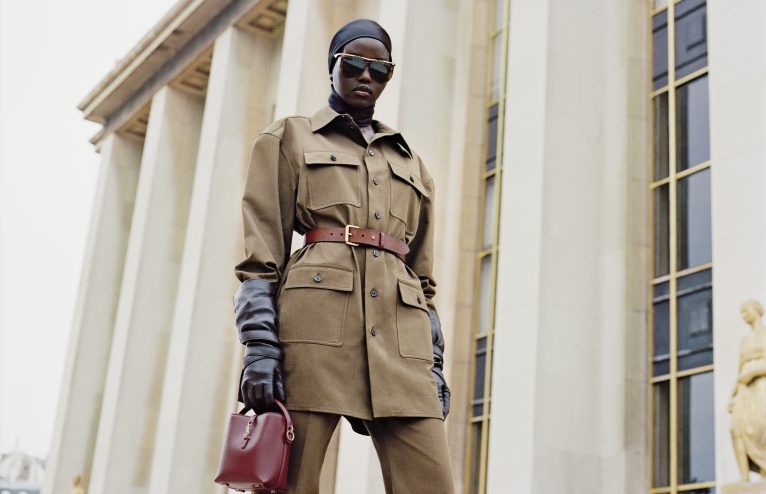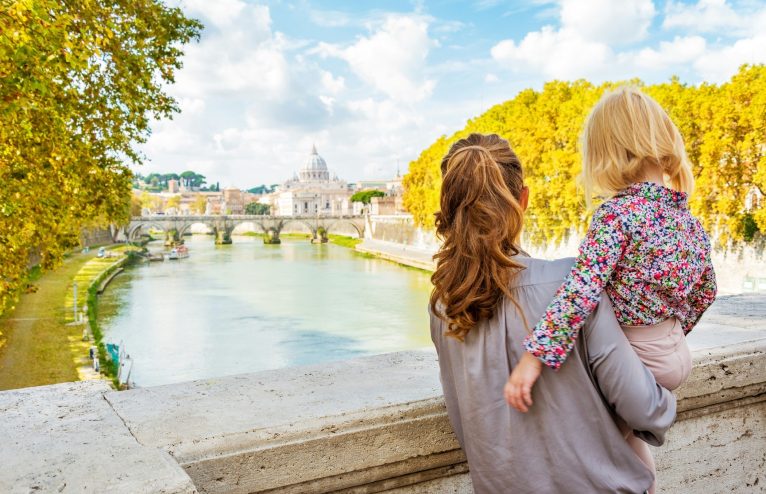Busy days of shopping and long festive nights spent with friends often overwrite plans in December, but these exhibitions in London are worth making time for.
There’s an exhibition in London for every occasion; whether booking as a Christmas gift or day out, or just to find a moment of peace in this hectic month. December is your last chance to visit the immersive fashion exhibition, Gucci Cosmos at 180 Studios, while Women In Revolt! at Tate Britain, David Hockney’s Drawing From Life at the National Portrait Gallery and Season of Sculpture at the Saatchi Gallery are all just getting started.
London’s generous offering of exhibitions are not to be missed.
David Hockney, an artist that needs no introduction, has arrived at the newly reopened National Portrait Gallery for the latest installation of his work Drawing from Life. Perpetually evolving with the years, over his expansive six decade career – from paintings to photography and digital sketches – Hockney’s portfolio spans a stylistically diverse body of work, where a sharp observation meets fluid creativity. Originally opened for just 20 days in March 2020, before international lockdowns, the anticipated exhibition is back, this time filling the infamous institutions’ walls with over 30 new, never before hung, portraits painted in Normandy across 2021 and 2022. These new paintings display colourful caricatures (compared to Hockney’s earlier bold, clean cut style) of the artist’s prestigious flurry of studio visitors – including Harry Styles and actor Louis-Martin Lambouley – and accompany pencil renderings, pastel sketches as well as ink and watercolour explorations of the human form. A powerful but inoffensive joie de vivre seeps into every brushstroke and there is an impressionistic attention to the mood of each painting, foregrounding the emotional state of each subject by capturing momentary, unsuspecting smiles. The exhibition runs alongside workshops at the National Portrait Gallery as well as talks panelled by artists including curator Isabel Seligman.
Art has always played a powerful role in activism, yet a very contested one too. However, it’s undeniable that the work produced by the artists featured in Women in Revolt! both commemorated change and helped to incite it. Tate Britain is highlighting the political and artistic role, networks, and craftsmanship of women from the 1970s to the 1990s, and it’s poignant to recognise how relevant these conversations are today. Organised chronologically, the exhibition begins with the first Women’s Liberation Conference in the UK in 1970 and navigates reproductive rights, equal pay, race equality and sexual stigmas up until the 1990s through photography, painting, drawing, textiles, printmaking, film and sculpture created by over 100 women. Many of these artworks have not been exhibited since their first public displays in the 1970s, forming an archival snapshot of the socio-political climate of the époque. The Hackney Flasher’s 1978 exhibition Who’s Holding the Baby explores reproductive labour while Jill Westwood’s 1983 performance piece Potent Female publicly considers the taboo of sex. The exhibition discusses Miss World protests, formation of the Brixton Black Women’s Group, punk & post-punk, Greenham Common and the British Black and South Asian feminist art discourses. Regardless of the year, this exhibition emphatically confirms that where there is activism, there are women.
The new Gucci Cosmos exhibition, housed in London’s iconic creative haven 180 Studios, commemorates the 102-year-old brand at a time of change; during Milan Fashion Week this autumn the Italian label made headlines with new Creative Director, Sabato De Sarno. With constant growth, Gucci treats its archive as more of a continual legacy that shape shifts through time, influenced by creatives, trends, celebrities and socio-political affairs alike. The immersive exhibition does not follow a traditional chronological format, but is nebulous instead. Several ‘worlds’ stagger the experience, each offering a totally unique immersive experience and photo moment, examining different sources of inspiration such as The Savoy hotel, where young Guccio Gucci first worked as a porter, to British equestrian culture, the natural world, and canonical moments in the brand’s long history (such as Tom Ford’s famous androgynous velvet suit). After successfully debuting in Shanghai and already proving popular in London, Gucci Cosmos is not an exhibition you’ll want to miss.
Daido Moriayama: A Retrospective at The Photographer’s Gallery explores the work of the Japanese artist and street photographer who rejected conventional magazine aestheticism for raw, documentary-style shots. ‘Retrospective’ is an apt title for the exhibition as, just like the installation reflects upon the photojournalist’s career, Moriayama was reflective and introspective of photography as a medium. Harsh contrast characterises the black and white imagery, which bear unusual compositions and often blur the focus. Across these captivating images, Moriayama uses photorealism and references to pop and youth culture to capture the fraught relationship between Japanese tradition and westernisation in post-war Japan. Featuring more than 200 works and large-scale installations as well as a dedicated reading room, the exhibition journeys through Moriayama’s tireless documentation, archival and self-questioning through dense, unconventional and intriguing photographs.
Season of Sculpture has arrived at the Saatchi Gallery in London, bringing a retrospective look at Christo and Jeanne-Claude’s creative career. An artistic Bonnie and Clyde duo, husband and wife Christo and Jeanne-Claude have been an unmissable force in the art industry – as well as in the public eye – since the late 1960s. Famous for their large-scale environmentalist installations, wrapped ornaments and historical monuments in particular, the two have hopped from Rome to Paris to Berlin and Manhattan leaving their brazen mark behind. Jeanne-Claude’s first two works in Paris and Rome, covering statues in Villa Borghese and Esplanade du Trocadéro respectively, were completed without legal permission, kick-starting what would soon become a trailblazing legacy. As part of the Saatchi Gallery’s Season of Sculpture, this new exhibition, Boundless, examines this, unveiling the purposes and processes behind the artworks contextualised alongside their artistic contemporaries including Jean Dubuffet, Yves Klein, and Lucio Fontana.
Break up your Christmas shopping this December, with a festive walk along London’s Southbank followed by a trip through one of Britain’s most pivotal centuries of art, the twentieth, to see iconic works from the likes of Francis Bacon, Michael Armitage, and Dorothea Lange. A conversation between photography and painting has existed in art since the camera came to use, with one medium always inspiring the other. Capturing the Moment helps write this dialogue across a single exhibition travelling through different periods and art movements. Beginning in the expressive post-war period with canonical artists such as Lucian Freud and Alice Neel, the exhibition then converges into pop art with Andy Warhol and Pauline Boty who famously merged the two mediums within the same artworks. Capturing the Moment shows not only what is gained by this didactic relationship, but also the contrasting creativity of artists through social and artistic change.
German painter, printmaker and sculptor Georg Bazelitz toys between abstraction and the recognisable in his work. This is the first solo exhibition of Baselitz’s work to date, an artist who has inspired the work of prestigious artists such as Tracey Emin and Jenny Saville across the last decades of his career. In fact, these artists testify their appreciation for the sculptor in a catalogue accompanying the exhibition, including poems written in response to Baselitz’s sculptures by Noble laureate Herta Müller, and Norman Rosenthal. Baselitz’s work is reflective and returns to characteristics of German Expressionism by using human subjects as the core focus. This art can now be viewed around the gardens and inside the galleries of the Serpentine; a culturally-enriching display during a winter walk through Kensington Gardens.
Slightly outside of London’s city centre, affording the gallery a beautiful grounds and spatial estate, Dulwich Picture Gallery is an expansive brick-clad and glass-domed ceilinged museum. Inside, it houses a fine art collection of Old Master paintings, spanning French, Italian and Spanish baroque as well as Tudor portraits and 19th century tableaus. As one of Britain’s first purpose-built public art galleries, founded in 1811, the very best of antique art covers every wall. This winter, its impressive portfolio includes the esteemed work of Flemish artist Peter Paul Rubens. With over 40 of the artist’s paintings never seen before in the UK, including some sourced from international and private collections, the exhibition seeks to prove how Rubens’ looked to women as a continual source of inspiration in both life and work. A male artist, painting during the late sixteenth to early seventeenth century, his work has previously been dismissed as typical of its time however, here you can view portraits of his wife and children alongside vivid depictions of imagined women, that rewrite his legacy.
Hayward is an internationally acclaimed contemporary art gallery which brings out one exciting exhibition after the next and where artists regularly frequent stages with live performances, talks, and exhibitions. Currently featured is Japanese photographer Hiroshi Sugimoto, whose sharply-composed and meditative work leave an almost trance-inducing impression on its viewer. With his roots in architecture, it’s clear to see the influence of an astute awareness of form in Sugimoto’s photos. Subversive, captivating, and meticulous, Sugimoto foregrounds a philosophical enquiry of the subjective forms of time and memory through an almost mathematical precision – all while using a large-format wooden camera. Highlights include ‘Conceptual Forms’ and Sugimoto’s black and white portrait of Princess Diana.
If you’re looking for a quick respite from the festive crowds of Covent Garden or an artistic activity before stepping onto the ice at Somerset House, the prestigious Courtauld Gallery is just a stone’s throw away and offers one of the greatest art collections in the UK. On display at the moment in the Gilbert and Ildiko Butler Drawing Gallery (entry here is included in the general admission fee) is La Serenissima: Drawing in 18th Century Venice. Sourced from the Courtauld’s expansive archives, the display showcases around 20 sketches of Venice, from which affluence and hope flourish. The dandy, cosmopolitan atmosphere evoked is shared between each drawing whether Canaletto’s lively Grand Canal sketch or Giambattista Tiepolo’s witty social observations. Once collected by international admirers of the animated Italian city, these snapshots of colourful moments in time are now offered up to public view.
Lead image: Jill Westwood, Potent-Female, 1983. Courtesy Dr Jill Westwood.
We may earn a commission if you buy something from any affiliate links on our site.






























Any Questions or Tips to add?